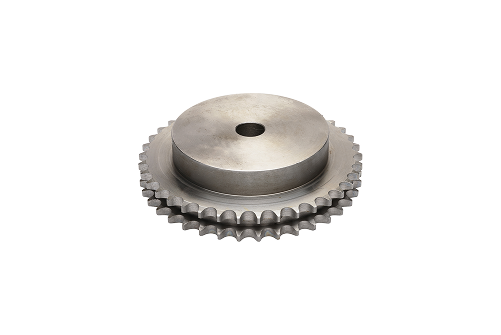In industrial power transmission systems, sprockets are essential components that enable the efficient transfer of power and motion. From timber mills to food manufacturing factories, sprockets play a crucial role in driving machines and conveyors that power these industries. But what exactly is a sprocket, and how does it work in these industrial settings?
Understanding Sprockets: The Basics
A sprocket is a toothed wheel or gear that engages with a roller chain to transfer rotary motion between different parts of a machine. Unlike gears that mesh with other gears, sprockets interact specifically with chains, creating a reliable and efficient way to transmit power.
Sprockets are typically made from durable materials like steel or stainless steel, which can handle the heavy loads and harsh conditions found in industrial environments. Their teeth mesh with the links of a chain, allowing smooth and precise movement, even under high torque and stress.
How Does a Sprocket Work?
The primary function of a sprocket is to transfer power from one rotating part to another. When a motor or engine rotates a sprocket, the teeth of the sprocket mesh with the chain, causing the chain to move. As the chain moves, it rotates other sprockets in the system, transferring power to various parts of a machine or conveyor.
Sprockets are commonly used in systems where power needs to be transmitted over a distance, such as conveyor belts, production lines, and even machinery in timber mills and food manufacturing plants. They ensure that the chain moves smoothly and efficiently, enabling reliable operation of complex machinery.
Why are Sprockets Important in Industrial Applications?
Sprockets are integral to industrial systems for several reasons:
• Efficient Power Transmission: Sprockets work alongside chains to deliver efficient, reliable power, even in demanding conditions.
• Durability: Industrial sprockets are built to withstand heavy loads and high operational stress, making them perfect for applications in timber mills, food processing, and other tough environments.
• Versatility: Whether it’s a single, dual, or triple chain system, sprockets can be customized to meet the specific needs of various industrial applications.
• Low Maintenance: With proper care, sprockets require minimal maintenance, offering a cost-effective solution for long-term use.
Types of Sprockets
In industrial applications, sprockets come in different configurations to suit varying operational needs. The three primary types of sprockets are:
1. Simplex Sprockets: Simplex sprockets are the most common type and feature a single set of teeth. They are used in systems that require the transmission of power through a single chain. Simplex sprockets are perfect for straightforward applications where only one chain is needed for the power transfer.
2. Duplex Sprockets: Duplex sprockets have two sets of teeth, allowing them to accommodate two chains. This type of sprocket is ideal for applications that require more power or where two chains are used to increase load capacity. Duplex sprockets are commonly used in larger machinery, like conveyors in manufacturing plants, where higher power transmission is required.
3. Triplex Sprockets: Triplex sprockets feature three sets of teeth and are designed for even higher power transmission. These are used in heavy-duty applications where multiple chains are required to handle very high loads. Triplex sprockets are common in large-scale industrial systems, such as those found in timber mills or large food processing facilities.
Applications of Sprockets in Industry
Sprockets are used across a wide variety of industrial applications, including:
• Timber Mills: Sprockets are used in sawmills, conveyor systems, and other heavy-duty machinery to transport materials efficiently through the production line.
• Food Manufacturing Factories: From conveyors to processing machines, sprockets help ensure smooth operation in food production lines, moving products through different stages of processing with precision.
• Packaging and Material Handling: Sprockets drive the chains in packaging systems, ensuring products move through packing, labelling, and shipping stages.
Maintaining Sprockets
Proper maintenance is key to ensuring sprockets continue to operate at peak efficiency. Here are a few tips for maintaining sprockets in industrial settings:
• Lubrication: Regular lubrication is essential to reduce friction and wear between the sprocket and chain, extending their lifespan.
• Inspection: Regularly check the sprocket teeth for signs of wear, deformation, or damage, which could lead to chain slippage or system failure.
• Alignment: Ensure that the sprockets and chains are properly aligned to prevent unnecessary strain on the components and avoid premature wear.
At RR Fisher, we offer a wide selection of high-quality industrial sprockets for various applications. Whether you're looking for simplex, duplex, or triplex sprockets, our team can help you find the right solution to optimize your machinery and power transmission systems.

